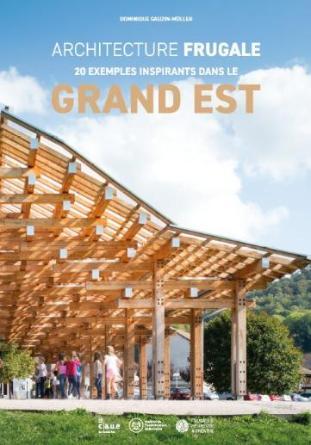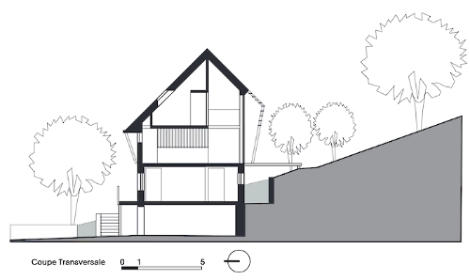Alsatian house, Zittersheim, Bas-Rhin
Frugal architecture: 20 inspiring examples from the Grand Est
September 2021
FRUGALITÉ HEUREUSE et CREATIVE (FH&C)
There are already a large number of buildings that can be described as « frugal » and that demonstrate a new balance between tradition and modernity. This book highlights twenty projects recently built in the pioneering Grand Est region, whose local groups (in Lorraine and Alsace) are among the most committed. By sharing these inspiring examples, the intention of the Movement for Happy and Creative Frugality is to inspire professionals, decision-makers and citizens to get involved in the necessary paradigm shift, which is beginning to take shape.

Energy frugality
In the field of energy, the « Manifesto for a happy and creative frugality » advocates sober and efficient solutions to ensure thermal comfort, in summer and in winter. In both new buildings and renovations, energy needs can be minimised by bioclimatic measures, reinforced insulation and natural ventilation. It is then possible to cover them with locally produced renewable sources: solar, geothermal and wood energy. Two of the projects in this chapter have the Passivhaus label: the four social housing units in Plainfaing and the disability platform in Diemeringen. Others deliberately steer clear of the fashion for « intelligent buildings » and their sophisticated technical installations. After renovation, the house in Maron consumes five times less energy thanks to simple and effective measures. And the house in Zittersheim only needs 750 kg of wood pellets per year to heat it, thanks to the thermal corrective plaster applied to the old stone base and the reinforced insulation of the wooden roof. At the Attigny school complex, inventiveness and collective intelligence have led to robust solutions that rely on the involvement of the occupants.
« This is a special house. It doesn’t look like the others and that’s good! We often see deer through the glass wall.

A couple of architects and their three children live happily in this « contemporary wooden hut, set on an old house and open to the landscape ». Built around 1850 with sandstone from a quarry near the village, the existing house was modest and functional. Its ground floor now houses the entrance, the master bedroom and the bathroom. The wooden roof extension has created a large south-facing living space with level access to the garden. The children’s floor includes three « refuge rooms » opening onto a play area on the mezzanine above the living room. The old, decrepit house has been renovated and elevated in keeping with the original natural materials. The sandstone walls of the old base were insulated with materials that respect the hygrometric balance. The lime, cork and diatomaceous earth-based thermal plaster (8 cm inside and 2 cm outside) was finished with earth on the inside and lime on the outside. The two new floors have a solid Vosges spruce frame and reinforced insulation with cellulose wadding and wood fibre panels.
The family often lives outside: the large terrace to the south-east is complemented to the north-west by an English courtyard, which is pleasantly tempered on hot days. In winter, the new spaces are heated by a Hoben stove, which consumes only 750 kg of wood pellets per year.

Technical report
Location: Zittersheim, France
Year of construction: 2016
Surface area: 117 m2
Construction cost: 163,800 €.
Owner: Aurélie Wisser and Pascal Demoulin
Project management: Aurélie Wisser and Pascal Demoulin
Sources
To go further
-
The book « Architecture frugale: 20 inspiring examples in the Grand Est » is available in full (in French) on the website of the Mouvement de la frugalité heureuse et créative:
frugalite.org/2021/09/architecture-frugale-20-exemples-inspirants-dans-le-grand-est/